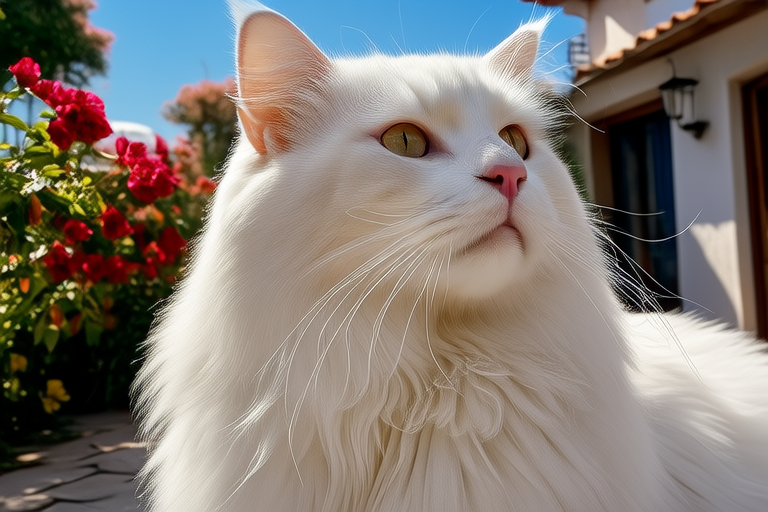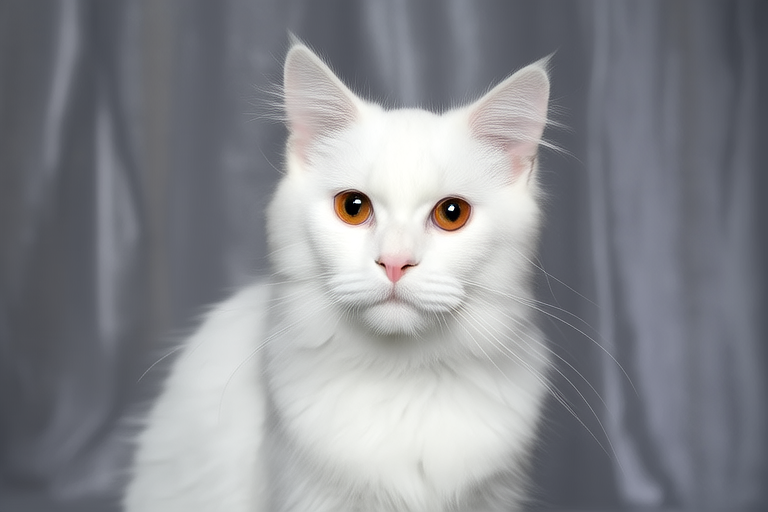
The Rare Beauty of the Turkish Angora: Facts You Need to Know
The Turkish Angora, with its regal lineage and unmistakable elegance, has been captivating hearts since the dawn of time. This feline marvel, steeped in history and folklore, is not just a pet but a piece of living history. From its origins in ancient Turkey to its distinctive physical traits and charming behavior, the Turkish Angora is a breed that stands out in the world of cats.
Historical Origins: A Legacy Rooted in Ancient Times
The Turkish Angora’s roots trace back to the heart of Asia Minor, where it has lived alongside humans for millennia. Legends and historical records suggest that this breed was cherished by royalty and commoners alike, often being considered sacred due to their striking appearance and graceful demeanor. The Turkish Angora has been mentioned in various historical texts, including the writings of travelers and historians who visited the region during the Middle Ages. Their presence in Turkey can be traced back to the 16th century when they were frequently depicted in Turkish art and literature. These cats were often associated with wealth and nobility, symbolizing luxury and refinement.
During the Ottoman Empire, Turkish Angoras were highly valued and sometimes gifted to foreign dignitaries. In fact, the breed became so renowned that it was often given as a diplomatic gift, further spreading their fame across Europe and beyond. However, it wasn’t until the 20th century that the Turkish Angora gained recognition in the Western world. The breed was introduced to North America in the 1960s, and soon after, it was officially recognized by major cat registries, including the Cat Fanciers’ Association (CFA).
Distinctive Physical Traits: Graceful and Silky
The Turkish Angora is renowned for its stunning appearance, particularly its silky white coat and striking blue eyes. This breed’s coat is often described as having a soft, luxurious texture, making it feel almost like silk to the touch. The coat is medium-length and fine, requiring minimal grooming, which is one of the reasons why many cat lovers find them appealing. While white is the most common color, Turkish Angoras can also come in various other colors, including black, red, and tabby patterns, all with equally mesmerizing blue eyes.
Their eyes, which are typically large and almond-shaped, are another hallmark of the Turkish Angora’s beauty. The combination of their bright blue eyes and silky white fur creates a striking contrast that is both elegant and captivating. This eye color is caused by a recessive gene, which means that both parents must carry the gene for the offspring to have blue eyes. It’s important to note that not all Turkish Angoras have blue eyes; some may have green or amber eyes, adding even more variety to the breed.
Behavioral Characteristics: Playful and Intelligent
Beyond their physical attributes, Turkish Angoras are known for their playful and intelligent nature. They are often described as being highly active and curious, always eager to explore their surroundings. Their intelligence is reflected in their ability to solve problems and adapt to new situations, making them excellent companions for interactive play. These cats enjoy games that challenge their minds, such as puzzle toys or fetch. Their playful nature is often accompanied by a mischievous streak, which can make them quite entertaining to watch.
Turkish Angoras are also known for their strong bond with their human companions. They tend to form deep attachments and can become very loyal, often following their owners around the house. Despite their affectionate nature, they are independent cats and may not require constant attention. However, they do thrive on interaction and engagement, so it’s important for potential owners to provide them with plenty of mental and physical stimulation. Their intelligence and curiosity mean that they can learn tricks and respond well to positive reinforcement training.
Care Requirements: Special Considerations for a Healthy Lifestyle
While the Turkish Angora is generally a healthy breed, there are some specific care requirements that owners should be aware of. One of the most notable aspects of caring for a Turkish Angora is their grooming needs. Although their coat requires less maintenance than some other long-haired breeds, regular brushing is still necessary to prevent matting and keep their fur looking its best. Additionally, owners should pay special attention to their ears, as they are prone to wax buildup and infections. Regular cleaning and monitoring can help prevent these issues.
Dietary considerations are also important for maintaining the health of a Turkish Angora. A balanced diet rich in protein and essential nutrients is crucial for their overall well-being. Owners should consult with a veterinarian to determine the appropriate diet based on the cat’s age, activity level, and any specific health concerns. Regular veterinary check-ups are recommended to ensure early detection and management of any potential health issues.
Myths and Misconceptions: Separating Fact from Fiction
Despite their popularity, there are several myths and misconceptions surrounding the Turkish Angora. One common myth is that all Turkish Angoras have blue eyes. While blue eyes are a defining characteristic of the breed, it’s important to remember that not all Turkish Angoras have blue eyes. Some may have green or amber eyes, which can be just as beautiful and mesmerizing. Another misconception is that Turkish Angoras are high-maintenance pets. While they do require regular grooming and attention to certain health issues, they are generally low-maintenance compared to other long-haired breeds.
Another myth is that Turkish Angoras are delicate or fragile. In reality, they are a robust and healthy breed with few genetic health issues. Their reputation as delicate cats may stem from their elegant appearance, but they are actually quite sturdy and resilient. It’s also worth noting that Turkish Angoras are not prone to hairballs, thanks to their short undercoat. This makes them a great choice for people who want a long-haired cat without the extra grooming challenges.
Conclusion: A Breed Worth Knowing
The Turkish Angora is a breed that combines history, beauty, and charm in a way that is truly unique. From their ancient origins in Turkey to their distinctive physical traits and playful nature, these cats have captivated the hearts of cat lovers around the world. Whether you’re a seasoned cat owner or considering adding a Turkish Angora to your family, understanding the breed’s history and care requirements will help ensure a happy and healthy relationship. With proper care and attention, a Turkish Angora can be a wonderful companion for years to come.






